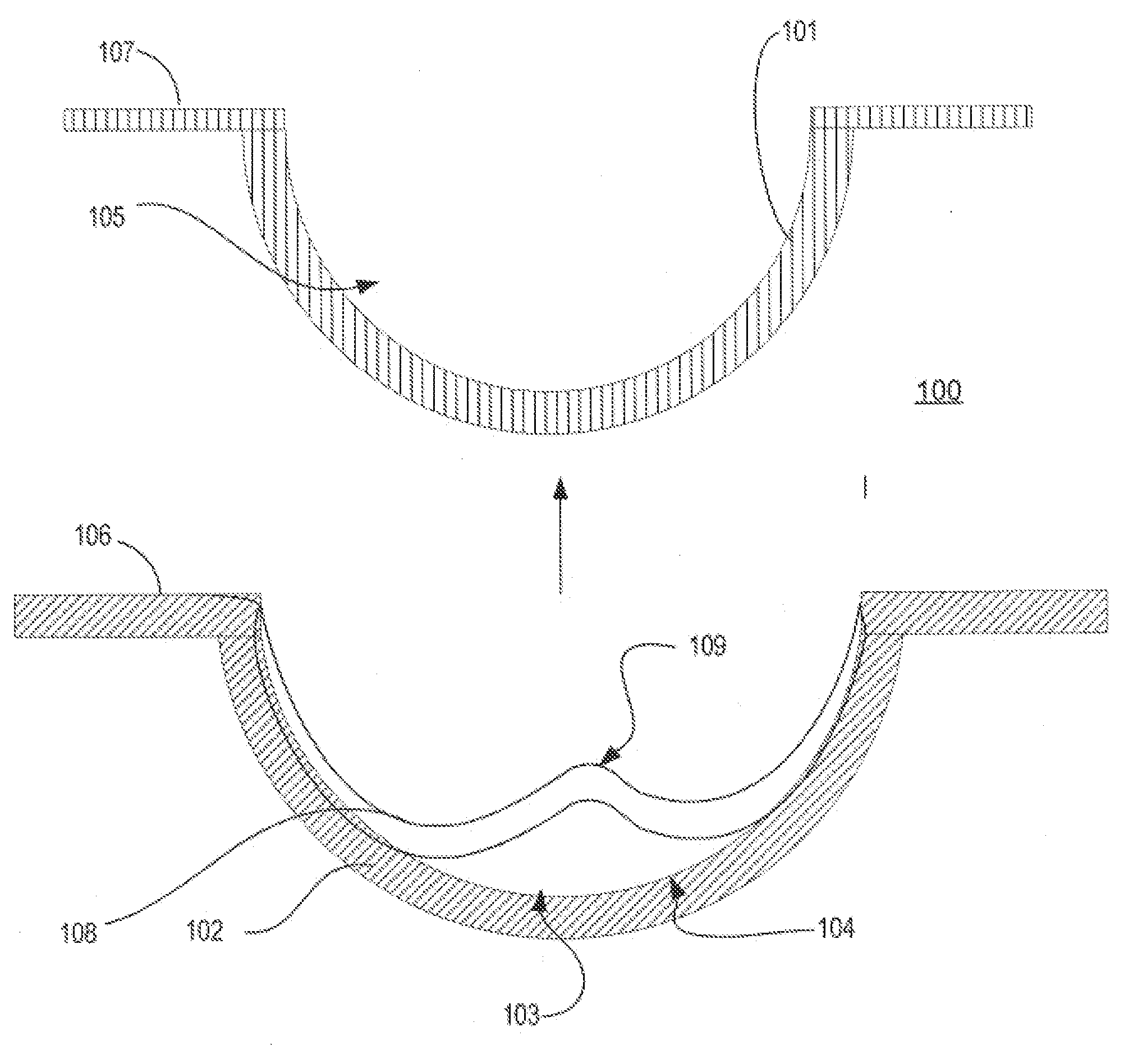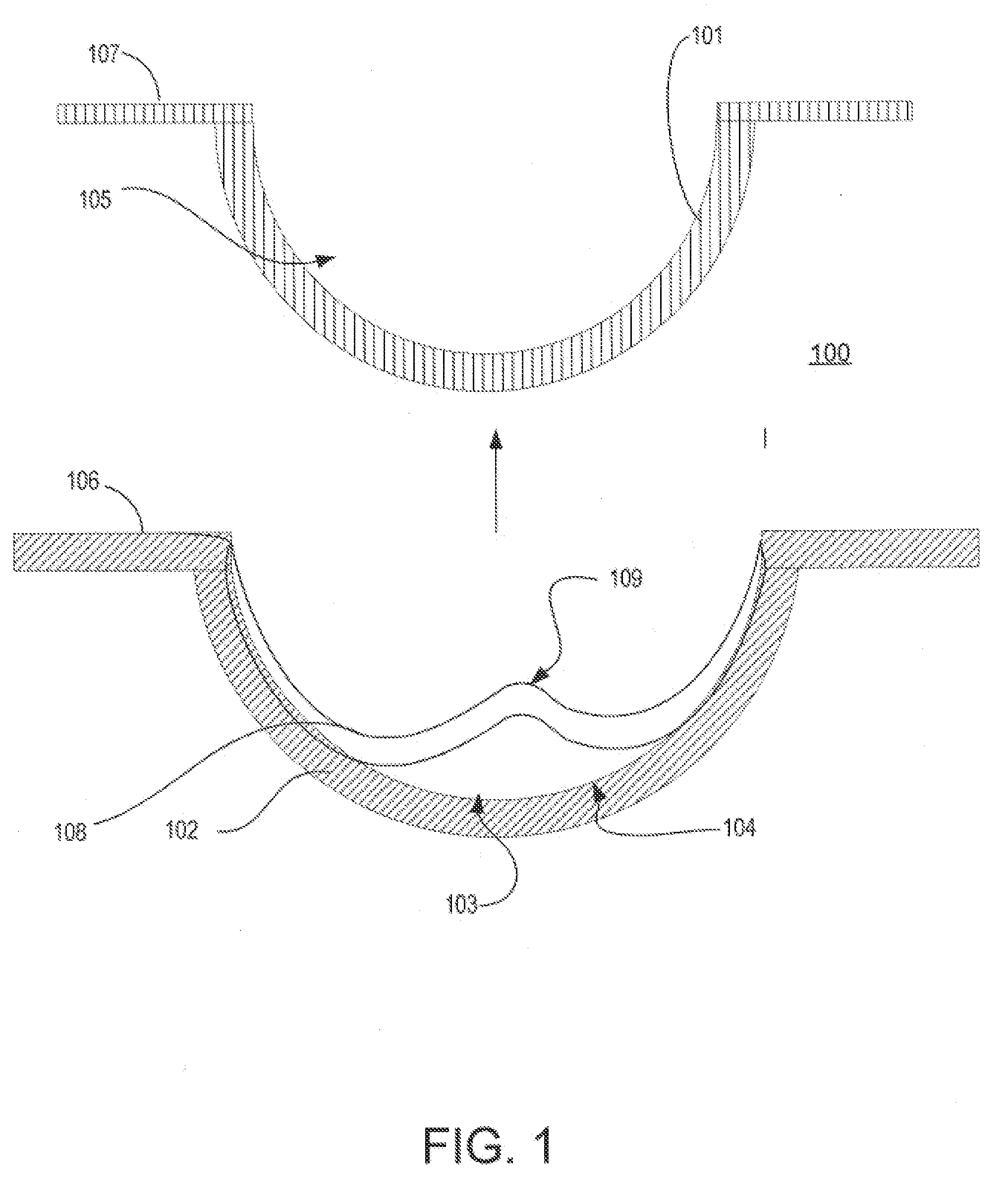Decreased lens delamination during ophthalmic lens manufacture
a technology for ophthalmic lenses and molds, applied in the field of molds for forming ophthalmic lenses, can solve the problems of unsuitable patients and relatively slowness, and achieve the effect of reducing the incidence of lens delamination
- Summary
- Abstract
- Description
- Claims
- Application Information
AI Technical Summary
Benefits of technology
Problems solved by technology
Method used
Image
Examples
Embodiment Construction
[0017]The present invention relates generally to methods for reducing lens delamination during manufacturing of ophthalmic lenses. In particular, the present invention refers to the use of two mold parts, such as a base curve mold part and a front curve mold part, each with a lens forming surface, wherein an adhesive bias exists between an ophthalmic lens formed between the two lens forming surfaces in relation to the ophthalmic lens.
[0018]The presence of adhesive bias between base curve and front curve facilitates easier, reduced pry force disengagement / separation of the front curve mold parts and the base curve mold parts during lens demolding. Embodiments can include, for example, the adhesive bias being accomplished via: dissimilar mold materials; dissimilar mold surface materials, additives to the mold material of one or more mold parts, thermal energy differential between the mold parts and other means to impart a delta in adhesive force between the lens forming surface of a f...
PUM
| Property | Measurement | Unit |
|---|---|---|
| temperatures | aaaaa | aaaaa |
| adhesive force | aaaaa | aaaaa |
| surface tension | aaaaa | aaaaa |
Abstract
Description
Claims
Application Information
 Login to View More
Login to View More - R&D
- Intellectual Property
- Life Sciences
- Materials
- Tech Scout
- Unparalleled Data Quality
- Higher Quality Content
- 60% Fewer Hallucinations
Browse by: Latest US Patents, China's latest patents, Technical Efficacy Thesaurus, Application Domain, Technology Topic, Popular Technical Reports.
© 2025 PatSnap. All rights reserved.Legal|Privacy policy|Modern Slavery Act Transparency Statement|Sitemap|About US| Contact US: help@patsnap.com



